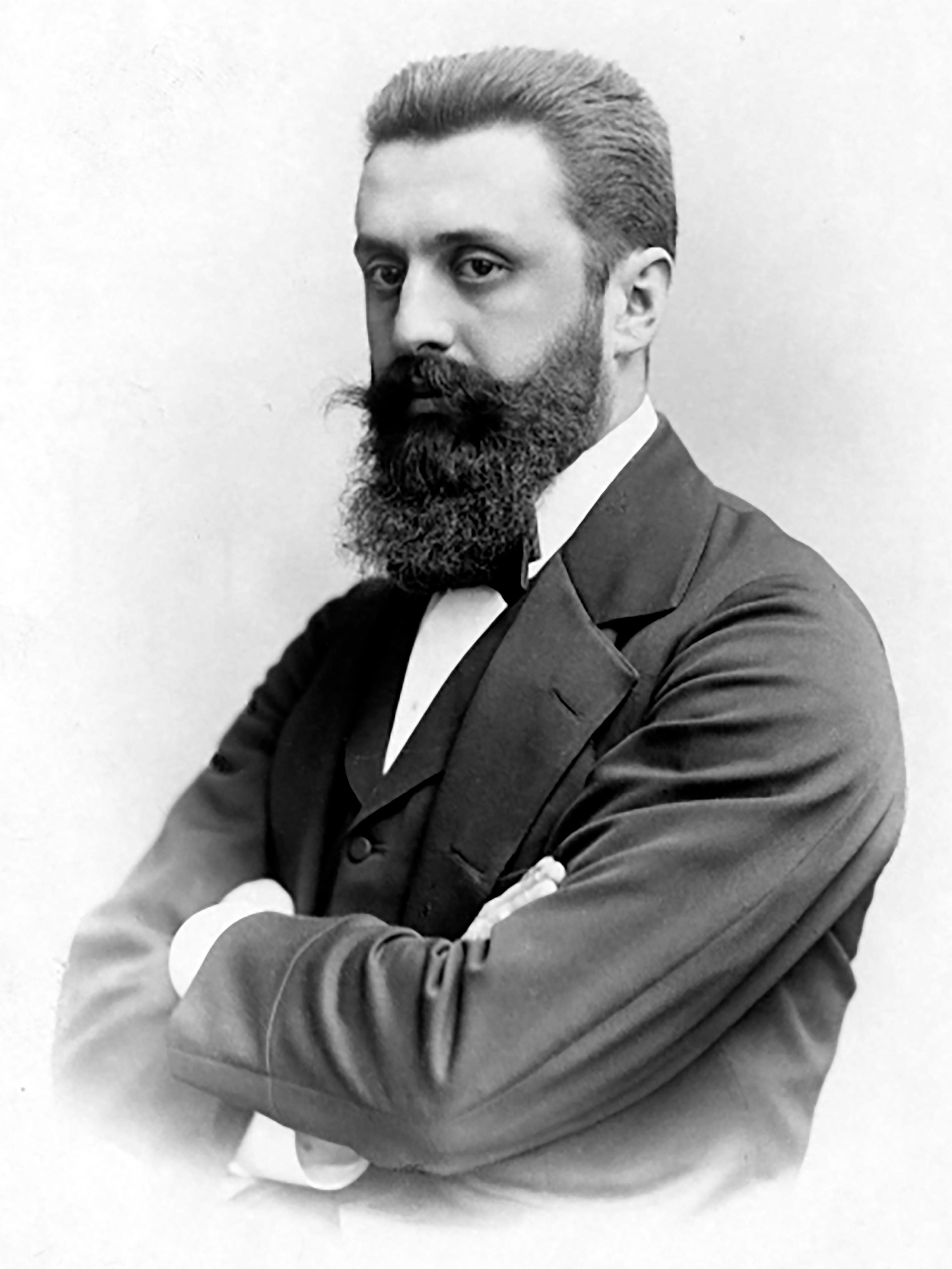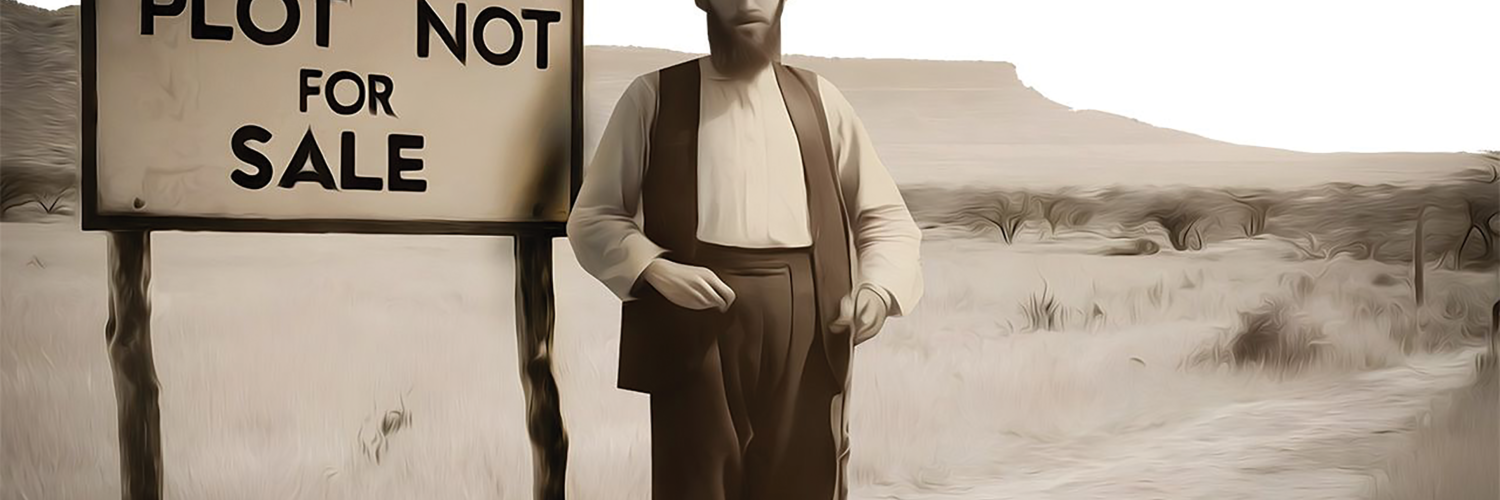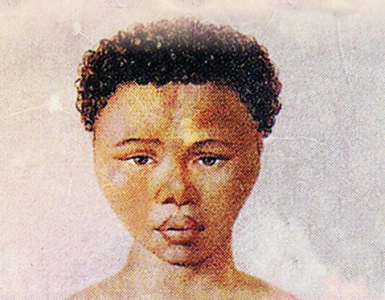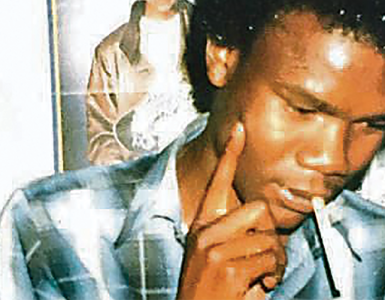We Dreamt of Africa: The Aborted Plan for a Jewish Homeland in Kenya East Africa was one of the places that European Jews considered as a potential homeland in the early twentieth century but a proposal wrongly called the Uganda Plan, because the Uasin Gishu plateau was believed to lie in the neighbouring Uganda Protectorate, came to naught
By Lotte Hughes
Jewish plans in the 1900s to create a homeland in the highlands of East Africa came to nothing. If they had gone ahead, the Holocaust may never have happened. The state of Israel may never have been created.
Conflict between Jews and Palestinians may never have happened either – or not on anything like on the same scale. Far-fetched? It may not be as fanciful as it sounds. These plans, in many ways delusional and impractical, are now long forgotten, not least by most Jews. But at the time, they were not only seriously considered by some European Jews desperate to find a foreign refuge safe from antisemitic pogroms, but also encouraged by the British government.
As conflict rages in Israel and Gaza, and different peoples stake historical claims to ethnic homelands, it is timely to revisit this bizarre story of what might have been. Britain then ruled the Protectorate of British East Africa (now Kenya), although the territory did not become a colony until 1920. Jews considered settling on the Uasin Gishu plateau after British Colonial Secretary, Joseph Chamberlain, offered it to them following a visit to the Protectorate in 1902. This is the man who infamously called the lands Britain colonised in Africa an “imperial estate”.
Chamberlain told the Jews that this 23,000-square-mile homeland could be self-governing. In some official papers, it is referred to as a “Jewish Colony” (see for example the correspondence between Protectorate Commissioner Sir Charles Eliot and the Foreign Office about his resignation over land concessions, published in July 1904). The promised land was later downsized to 4,950 square miles.
“Samson” became the codename for East Africa in Zionist communications. At the time, the proposal was wrongly called the Uganda Plan because the Uasin Gishu plateau was believed to lie in the neighbouring Uganda Protectorate.
Africans were not consulted, of course. There would almost certainly have been conflict between Jewish settlers and local communities. British soldier Colonel Meinertzhagen (who murdered Nandi prophet Koitalel Arap Samoei in 1905) foresaw such clashes, and fiercely opposed the plan.
Though an ardent Zionist, he declared: “God knows there will be enough trouble in 50 years when the natives get educated!” Charles Eliot also feared tensions between European farmers and Africans, the Maasai in particular: “If we are once committed to the introduction of Europeans among native races, conflicts are probable, and, perhaps, inevitable.” Some British officials were particularly concerned that racist Boers from South Africa might incite conflict.
The plateau was said to be empty, free of people. That was belied by reports of Maasai warriors who allegedly threatened an exploratory expedition sent to scout the area. The “explorers” also mentioned coming across Nandi, and may have confused the two groups.
What were Maasai and Nandi doing there if the plateau was unpopulated? A clue is in the name: il-uasin kishu (or il-wuasin kishu) means ‘the patchy cattle’ in the Maa language, and is also the name of a Maasai section that once lived there.
The old lie of terra nullius, or uninhabited lands, has been used down the centuries to “justify” colonial conquest in many parts of the world. Sir Harry Johnston, former commissioner of the Uganda Protectorate, declared in a letter reprinted in the African Standard that the plateau “was one of the best pieces of unoccupied land which could be found … in the British Empire”.
This was a turnaround; Johnston had previously been hostile to the plan. East Africa wasn’t the only place European Jews considered as a potential homeland in the early twentieth century. (There were earlier precedents: by the spring of 1886 some 7,000 Jews had relocated to Argentina, but saw it more as a place of safety than a homeland.)
Among others, Jews also investigated sites in Angola, Tasmania, Madagascar, upstate New York, Dutch Guiana (now Suriname), and the Sinai Peninsula, and sent exploratory expeditions to scout them. In a new homeland Jews sought autonomy, self-rule, and the freedom to make their own laws.
But above all, they sought safety. (Ironically, the Israeli government now proposes expelling Palestinians from Gaza to the Sinai Peninsula.) American political scientist Barnett R. Rubin has recently written in the Boston Review: “Since the Jewish people had no land on which to establish a state, the Zionist movement went searching for a territory – as well as a sponsor that could assure their access to it. That was how Zionism became entangled with colonialism.”
How the plan was hatched At the time, the proposal was wrongly called the Uganda Plan because the Uasin Gishu plateau was believed to lie in the neighbouring Uganda Protectorate. (The eastern province of Uganda was moved to British East Africa in April 1902.) The name of the Uganda Railway, built between Mombasa and Kisumu and finished in 1901, may also have contributed to the confusion.
Some still refer to the plan by this name. It was first tabled for discussion at the Sixth Zionist Congress in Basel in 1903 by Dr Theodor Herzl, leader of the Zionist Organisation, who is often called the prophet of Zionism. He got a stormy reception; Jews were very divided – many said they must hold out for Palestine and not try to create a homeland anywhere else.
 The two rival movements were the Zionists and the so-called territorialists, who wanted to explore options beyond Palestine. Congress delegates who opposed the plan saw it as an abandonment of the Palestine dream. The Russian delegates walked out. The Congress finally voted in favour of sending an expedition to British East Africa to investigate its potential.
The two rival movements were the Zionists and the so-called territorialists, who wanted to explore options beyond Palestine. Congress delegates who opposed the plan saw it as an abandonment of the Palestine dream. The Russian delegates walked out. The Congress finally voted in favour of sending an expedition to British East Africa to investigate its potential.
American scholar Adam Rovner – whose published work I have drawn upon here, together with the 1968 book African Zion by Robert Weisbord – visited all these potential homelands and retraced the steps taken by the expeditions. Rovner makes an interesting point about Jewish exploration of options outside Palestine in this period, and alternative ideologies that now appear to be forgotten:
“Today Zionism remains the chief Jewish nationalist ideology, often to the point of rendering past and present alternative visions of nationhood invisible. Yet there are clear indications that at least one territorialist movement garnered more popular support on the yidishe gas – ‘the Jewish street’ – in the first decades of the twentieth century than Zionism.”
This was the movement that included the “Kenya” plan. Chamberlain’s offer followed a shocking pogrom in 1903 in Kishinev (now in Moldova, then part of the Russian empire), in which 49 Jews were killed. This and other massacres, and state-sanctioned antisemitism in general, accelerated Jewish plans to find a homeland overseas.
Herzl had already sought help from Britain, both financial and political, and received a warm welcome when he visited London in 1886. Seven years later, after his 1902 visit to East Africa, Chamberlain noted in an official report to the government: “If Dr Herzl were at all inclined to transfer his efforts to East Africa there would be no difficulty in finding land suitable for Jewish settlement.”
His motivation wasn’t exactly humanitarian, although in public speeches he spoke of providing “an asylum for these persecuted people”. Britain urgently needed to make the new Uganda Railway pay, aided by an influx of white settlers – preferably wealthy ones. Exploring Uasin Gishu A three-man expedition travelled to East Africa in 1904-05 and spent less than two months there.
They were an odd threesome, only one of them Jewish. Major Alfred St Hill Gibbons was an English sportsman, Boer War veteran, explorer and author of travel books. He was hired to manage the expedition. Alfred Kaiser was a Swiss explorer and scientist, and a convert to Islam, who spoke Kiswahili and Arabic. Nachum Wilbusch (he shortened the name from Wilbuschewitz) was a 25-year-old Jewish civil engineer.
Russian by birth, he had never been to Africa before, unlike the other two. Rovner describes Wilbusch as a double agent, who planned to sabotage the expedition. The three set off by train from Mombasa accompanied by a headman, servants and ten porters; 35 more porters joined the expedition later.
The team included several Maasai warriors who, Wilbusch noted, were believed to have Jewish blood. (There is in fact no evidence that Maasai are related to Jews.) This motley crew only started walking after they reached Nakuru. Two European settlers also accompanied them at the insistence of the settler community.
Hostility soon developed between Gibbons and Wilbusch. The younger man suspected that Gibbons planned to report back favourably, irrespective of whether Uasin Gishu was suitable for settlement or not. Wilbusch accused Gibbons of poor organisation, while Gibbons accused him of being “no help … from start to finish”. Other tensions were rife: the porters refused to enter certain areas “for fear of enemy tribes”. There were arguments with the guides.
Food supplies were not sufficient, and luggage and vital equipment had been left behind in Nairobi. Gibbons, Kaiser and Wilbusch decided to separate, and explore different parts of the plateau in order to cover more ground. That nearly ended in disaster for Wilbusch, who got lost, was forced to eat locusts, and passed out near Mount Sirgoit. Rovner writes:
“When he came to, he watched a vulture overhead descend in slow circles.” When the three managed to reunite, Gibbons spoke glowingly of the rich, well-watered land he had seen. The other two had come to the opposite conclusion, although Rovner speculates (after checking Wilbusch’s field notes) that he appears to have drawn conclusions that contradicted his own experience. Along the way, the three men met and consulted with a few Jews who had already moved here from South Africa, mostly to farm.
They included the young Abraham Block, who rose from humble beginnings to found the famous chain of hotels. Scared off by Maasai in war regalia, tales of man-eating lions, and fierce opposition from white settlers, the expedition returned home with mixed reports. Wilbusch’s report ended with the words: “Where nothing exists, nothing can be done.”
The three men concluded that the area was “extremely unsuitable for a purely Jewish settlement” and could not support a large colony, although Gibbons remained more positive. By July 1905, at the Seventh Zionist Congress, the plan was officially shelved, although some Jews still wanted to pursue it.
The Colonial Office was reportedly relieved. Objections from settlers and clergy European settlers and some leading clergy loudly opposed the “Kenya” plan with the aid of a sympathetic media. Their main fear was that Jewish settlement would gobble up the best land in the Protectorate, although of course they wanted to gobble it up themselves.
This was a period of intense land speculation, with would-be settlers, many from South Africa, applying for large land grants all over the highlands. Groups of capitalists, notably the East Africa Syndicate, were also applying for land at this time. The Syndicate, whose members included Jewish financiers from the City of London, was granted 500 square miles of the Rift Valley. (Eliot thought the terms of the lease “too easy”, and resigned on a point of principle.) Settlers formed an Anti-Zionist Immigration Committee.
Levels of public antisemitism went through the roof, with talk of “Jewganda”, “Jewdrops”, “pauper alien Jews”, and “The Land of Noses”. Scared off by Maasai in war regalia, tales of man-eating lions, and fierce opposition from white settlers, the expedition returned home with mixed reports. Many of these racist sentiments were aired in the editorial, news and letters pages of the African Standard.
On 5 September 1903, for example, one headline read: “The Threatened Jewish Invasion”. The Standard published a letter signed “Patriot” in June 1904 that called for a boycott of the expedition – it should be refused food, shelter, transport and conversation, the writer believed, and so should any Europeans or Africans who aided it.
Unsurprisingly, leading settler Lord Delamere was at the forefront of this local opposition. As early as August 1903, he had sent a telegram to The Times of London declaring: “Feeling here very strong against introduction alien Jews”. I asked political scientist Barnett Rubin (see earlier mention of his recent article) to comment on this story, and began by asking him if, in his opinion, the plan could have been made to work.
“This plan could never have worked. Settlers and natives would have united to prevent it and drive the colonists out. The settlers would have had conflict with the Maasai rather than Palestinians. Even if the Zionist movement had accepted this plan, and some Jews started to settle there, most of the Jews of Europe (95 per cent) would never have considered it. And Jews felt zero attachment to that land, it was meaningless to them.” How do Jews look back on these events today if they even know about them? “
Jews generally don’t know about this and if they do, they consider it as a very minor weird detour in the history of Zionism.” The Uganda bar, Jerusalem Tourists visiting downtown Jerusalem today (in dwindling numbers, because of the conflict) may stumble across what Rovner calls a “countercultural pub” called Uganda. Presumably, he means it’s a tad alternative.
A framed portrait of Theodor Hertzl, one of the chief architects of the “Uganda Plan”, hangs over the bar. If the customers were asked what it all means, would they be able to answer? The Jewish community in Kenya There are about 1,000 Jews living in Kenya today, 300 in the Nairobi Synagogue community. Jews began arriving in 1899, and the Nairobi Congregation was founded in 1904.
More Jews continued to arrive from Europe, fleeing the Nazis. Today, the community is largely made up of the children and grandchildren of Holocaust survivors. There is also an African Jewish community called the Kasuku Gathundia, living near Nyahururu, and apparently Gikuyu.
- Dr Lotte Hughes is an historian of Africa and empire, and a journalist, who has written extensively about Kenya. Her publications include the book Moving the Maasai: A Colonial Misadventure (Palgrave Macmillan), The Elephant – African analysis, opinion and investigation






























